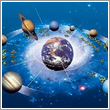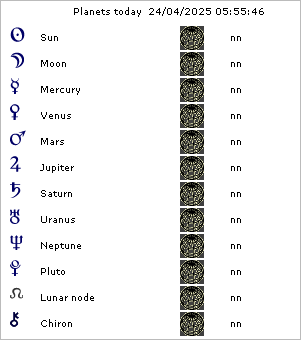|
The stages of life
Edited by Daniela Grazioli
Si sa, che nella vita ci sono alcuni momenti critici indicativi di un passaggio, momenti in cui si mescolano per un breve lasso di tempo la fine di una fase della vita e l’inizio della successiva.
Sono passaggi carichi di significato, svolte che determinano l’orientamento futuro della propria vita.
Un tempo questi momenti erano messi in risalto da cerimonie simboliche, veri e propri riti di “iniziazione” che concretamente ne sottolineavano l’importanza ed il significato di “passaggio”, tali sono per esempio la cerimonia del bar-mitzvah a 13 anni presso gli ebrei, oppure il ballo di debutto in società a 18 anni, o i diversi riti delle popolazioni primitive che indicano la fine dell'infanzia e l'ingresso nell'età adulta del ragazzo.
Se si considera la cadenza dei momenti celebrati da tali riti, sembrerebbe che il ciclo di sviluppo della vita umana sia basato su un ritmo di 7 anni: i 7 anni sono considerati l’età della ragione, i 14 anni sono l’età della pubertà, i 21 anni sono la maggiore età, i 35 anni sono il dantesco “Nel mezzo del cammin di nostra vita…”.
Quanto detto non suscita alcuna meraviglia, sono per tutti fatti ovvi e naturali, e allora perché ciò che è così ovvio e naturale diventa una specie di misteriosa magia quando le stesse cose le afferma l’astrologia? Lo sapete che il ciclo di rotazione di alcuni dei pianeti più incisivi per noi dal punto di vista del cambiamento corrisponde a multipli di 7 anni? Ciò significa, per esempio, che il pianeta Saturno che lentamente compie il suo giro nel cielo, ogni 7 anni cambia il tipo di rapporto che intrattiene con i pianeti del nostro tema di nascita, e ciò ha un notevole impatto nella nostra vita.
It is known that there are some indicative critical moments of our passage through life, moments in which there is an overlap for a short lapse of time from the end of one phase of life and the beginning of the following one.
These are passages loaded with meaning, turning points that determine the future orientation of our own lives.
Once these moments were put in prominence at symbolic ceremonies, real “initiation“ rites that in a practical way underline the importance and the meaning of this “passage“ , for example the ceremony of a bar - mitzvah for 13 year old Jewish people, or the debut dance in society at 18 years of age, or different rites of the primitive populations who indicate the end of childhood and the entry into the adult age of boys.
If we consider the frequency of moments celebrated by such rites, it would seem that the cycle of human development is based on a rhythm of 7 years: 7 years are considered the age of reason, 14 years the age of the puberty, 21 years the coming of age, 35 years are the Dante age “In the middle of our lives …”.
The above is not at all surprising, they are all obvious and natural, so why what is so obvious and natural becomes a kind of mysterious magic when the same things regard astrology? Do you know that the cycle of rotation of some of the most incisive planets for us from the standpoint of change returns are in multiples of 7 years? This means, for example, that the planet Saturn that slowly completes its circle in the chart, each 7 years changes the type of report that it has with the planets of our natal chart, and this has a significant impact on our life.
As you can see there is nothing mysterious or magic in the forecasts that astrology offers us, but a great correspondence and consonance with aspects of life that we have all experienced several times directly or indirectly.
That there are, technically, transits, the progressions and a solar return, you can find in the “abc of astrology”; here we try to clear up in what way they can be useful.
We all agree on the fact that life has moments of joy and moments of pain in reserve for each one of us, years in which everything runs peacefully without shocks, and years in which even our strongest certainties can be shaken, moments of crisis, or better still of “separation, decision, choice” in etymologically the term "krisis" refers to us.
What is the purpose of such "crises"? We can think that the important thing should be, as soon as a crisis has been overcome, to restore and to return to the preceding state of "normality", and then these "crises" leave us with, except pure and simple events that are more or less tragic, are only wounds to be treated and to be forgotten as soon as possible. Or, we can think that such critical events should leave us something, not only be painful and useless, but also bring a potential of inner metamorphosis that it is only up to us to activate. In this second case the "crises" become evolutive moments that through change allow us to get out of the "herd" of the "normality", where the current-rule returns all the equal "sheep", and start to “being instead in the herd rather than of the herd”.
What we will do in the crucial moments of our life, we will be to choose, we will be able to return to the preceding status - quo and to try to forget, or to accept the challenge that the crisis - metamorphosis gives us, and to widen and deepen our dimensions. In any case, but especially in the former one, the forecasts of the astrology can be a great help because they are based on the time of birth and the probable duration of the crisis - change, indicate its aims and what is necessary to transform in our life, and since “knowledge is power” to know in advance which sectors of our life and which dimensions of our personality will be subject to change, is very useful: it is a one and only opportunity. It is like turning up for an exam with knowing the syllabus or going through it without knowing anything about the subject.
Print this article
|
 |
|



